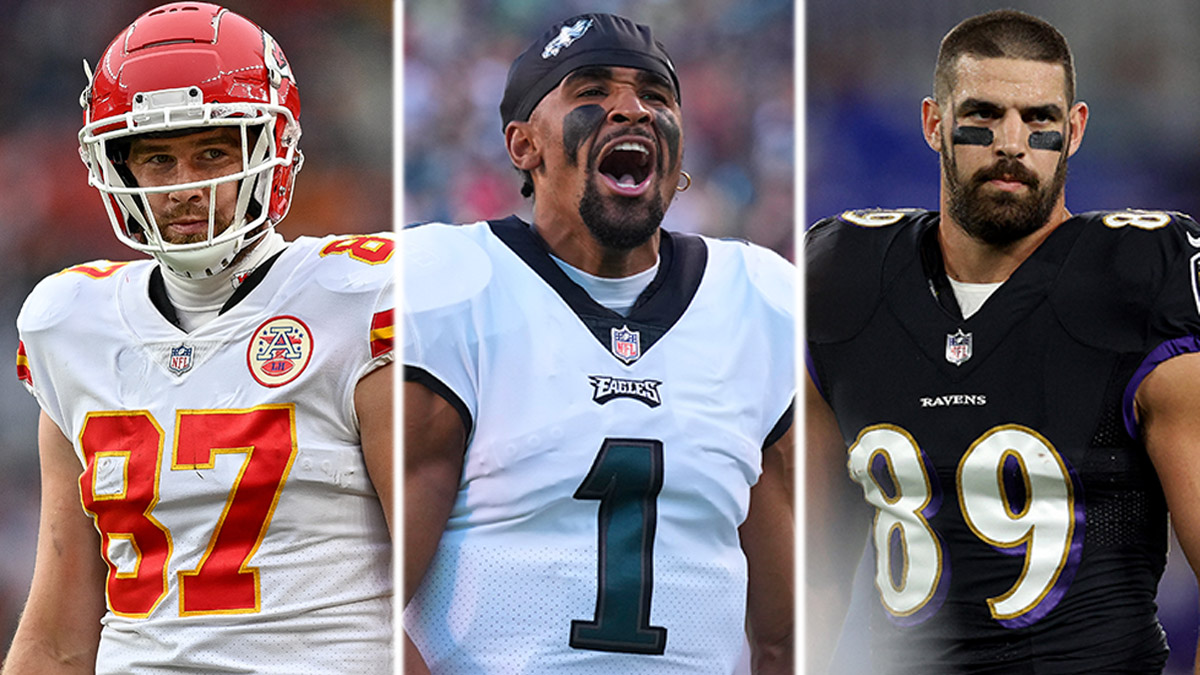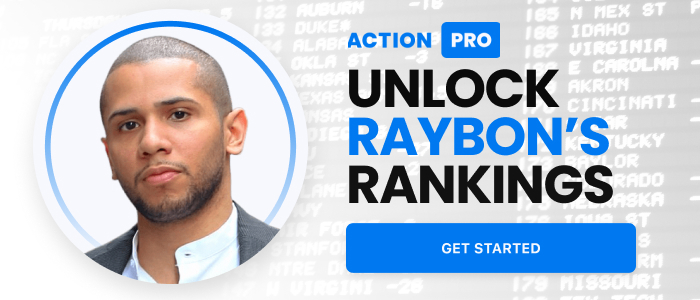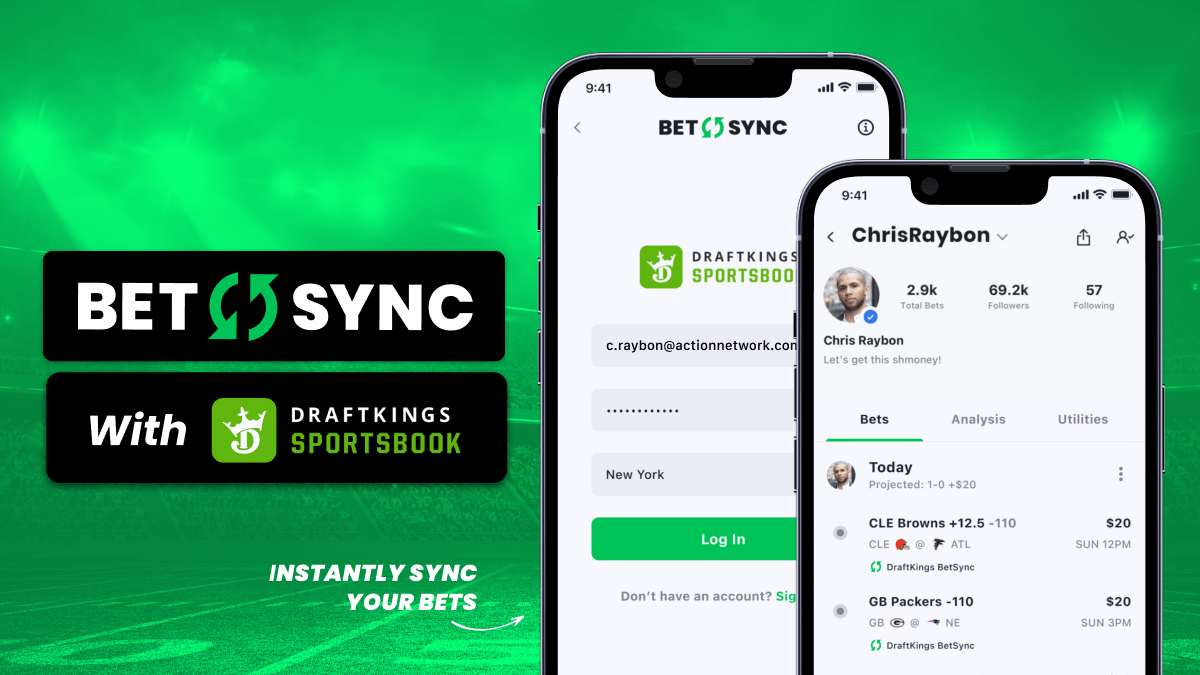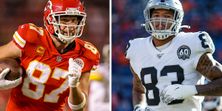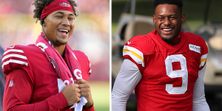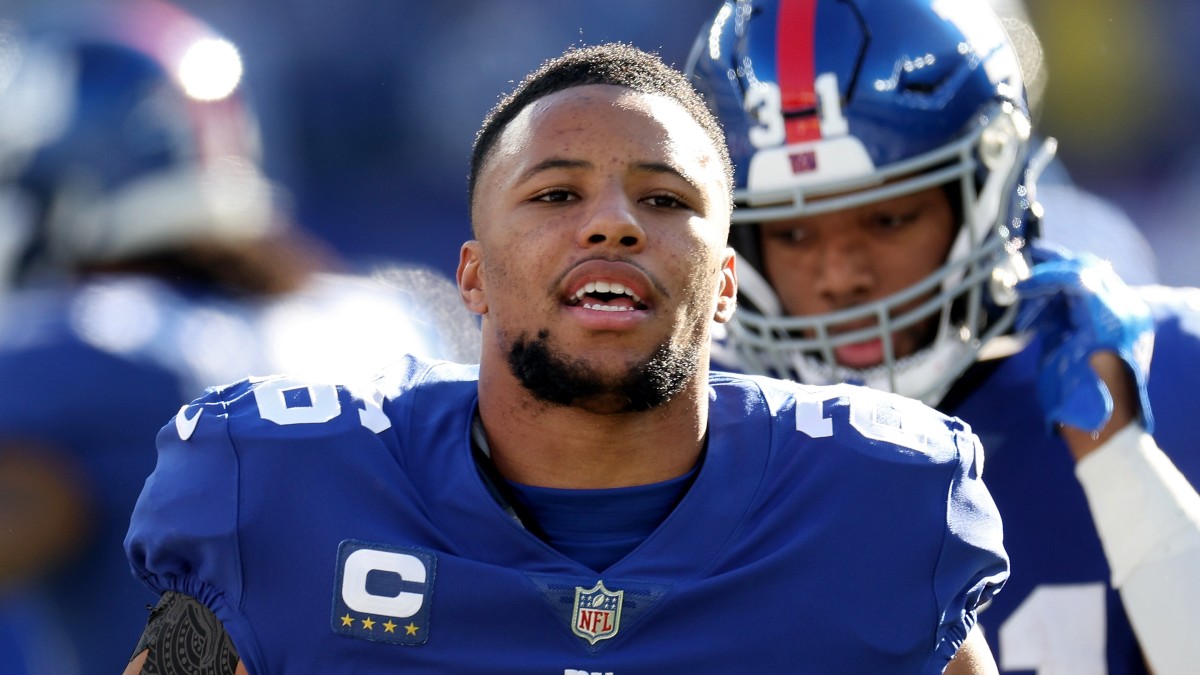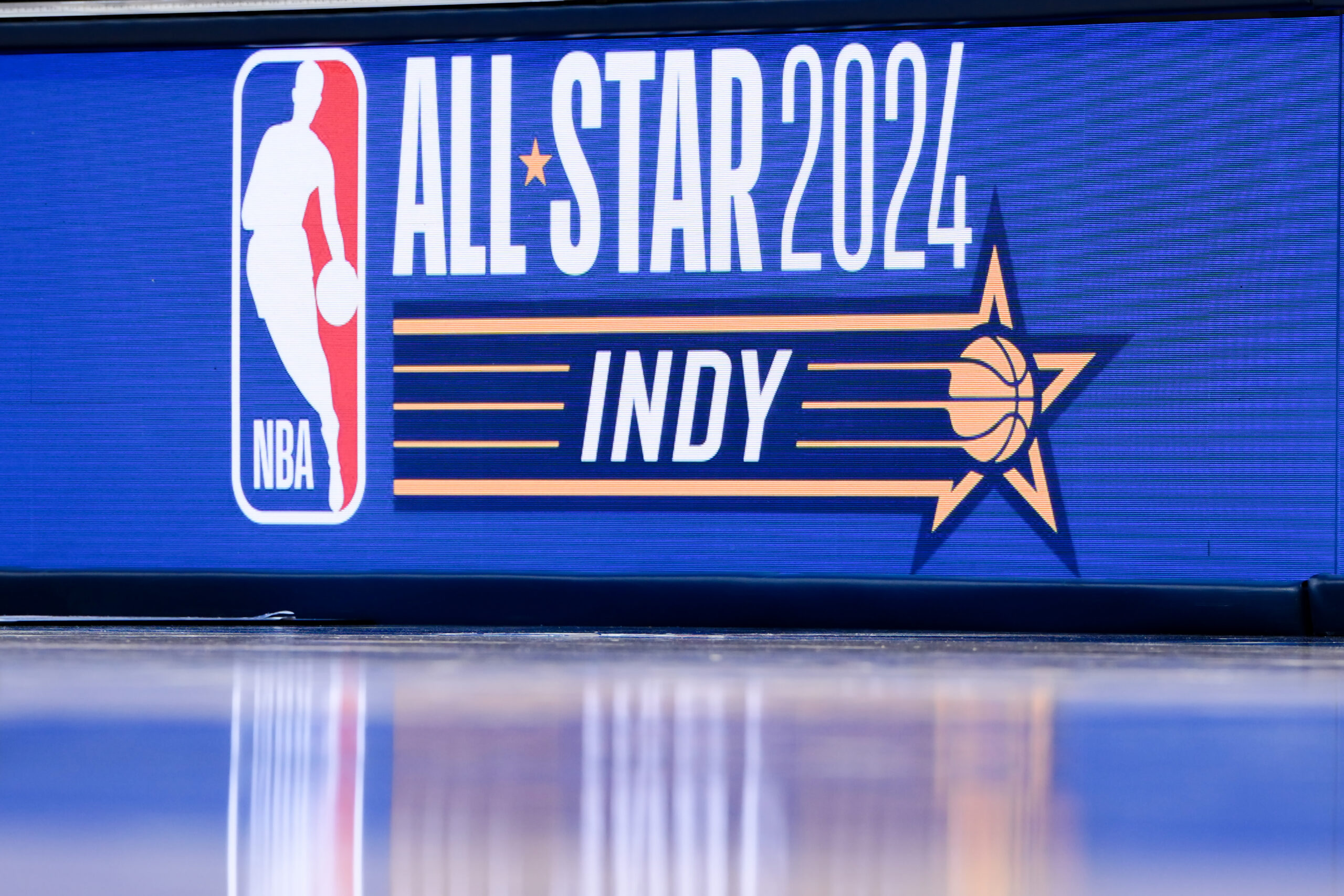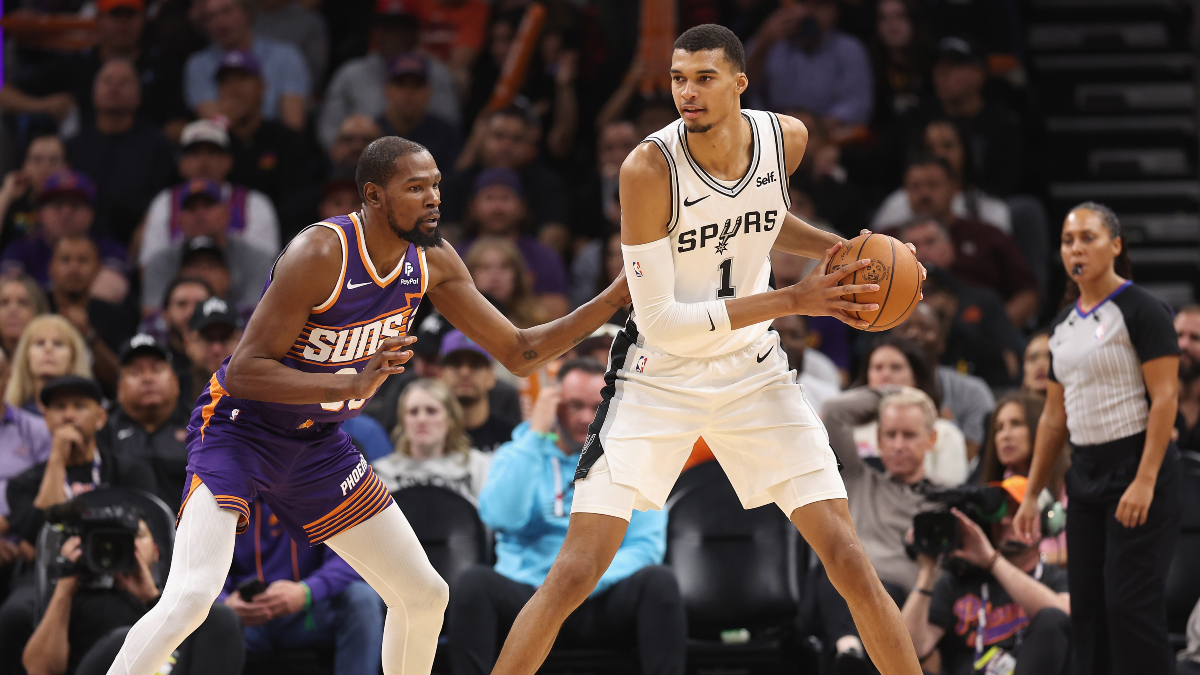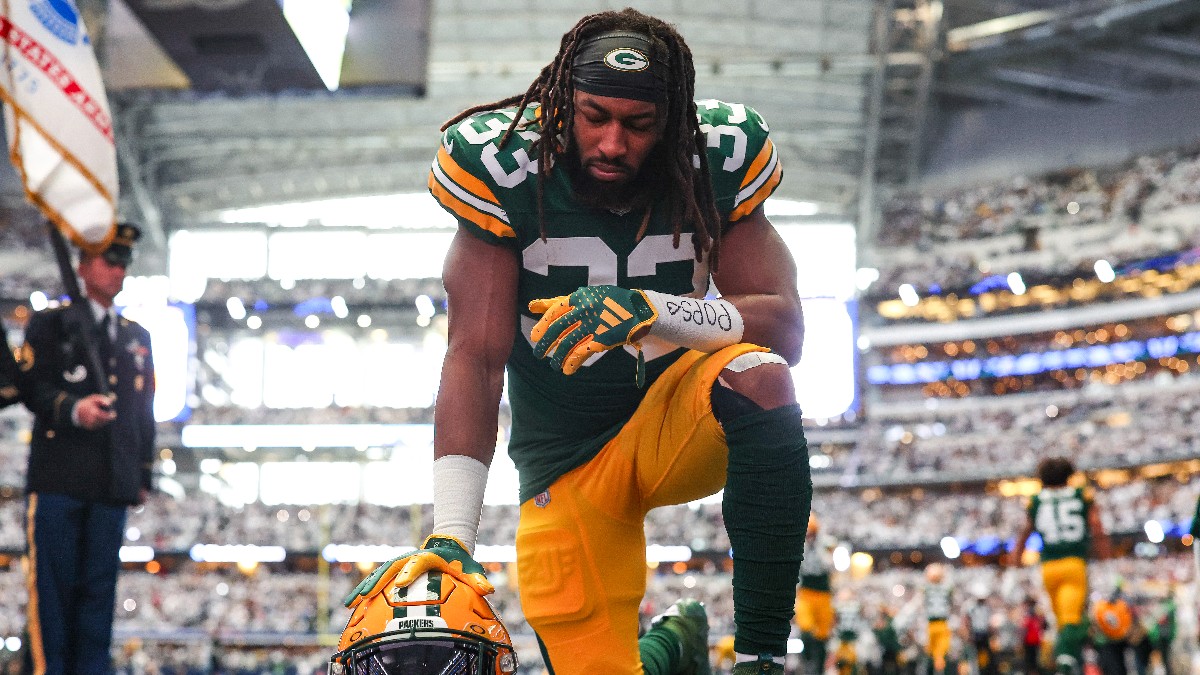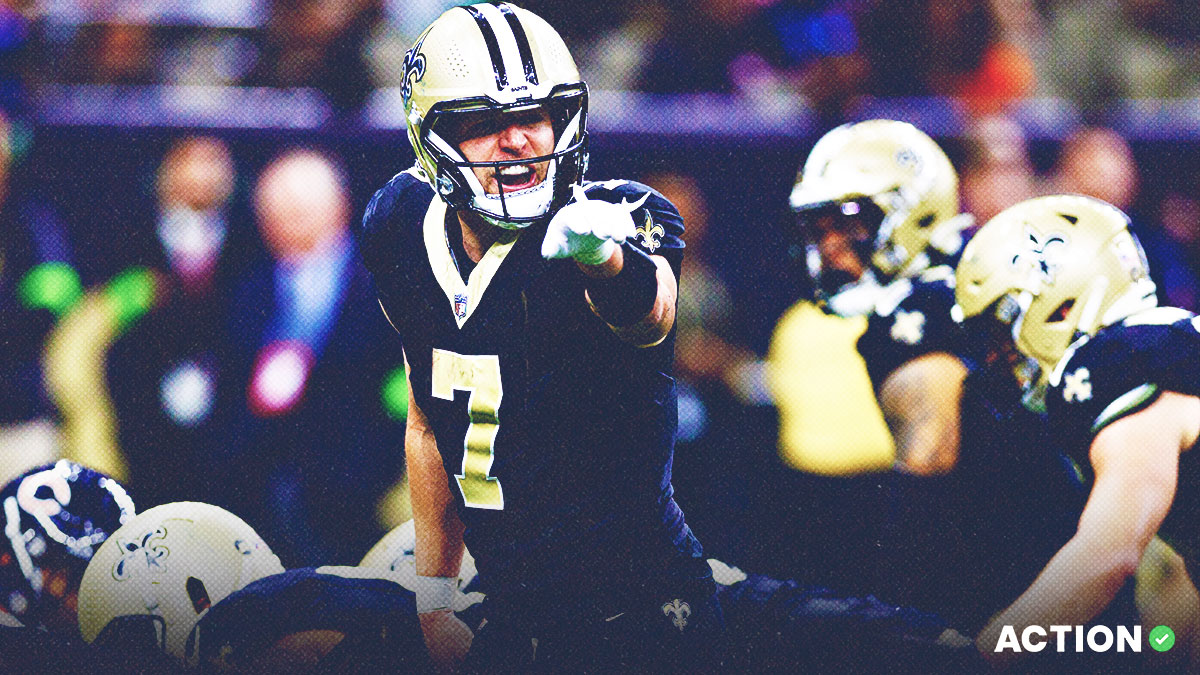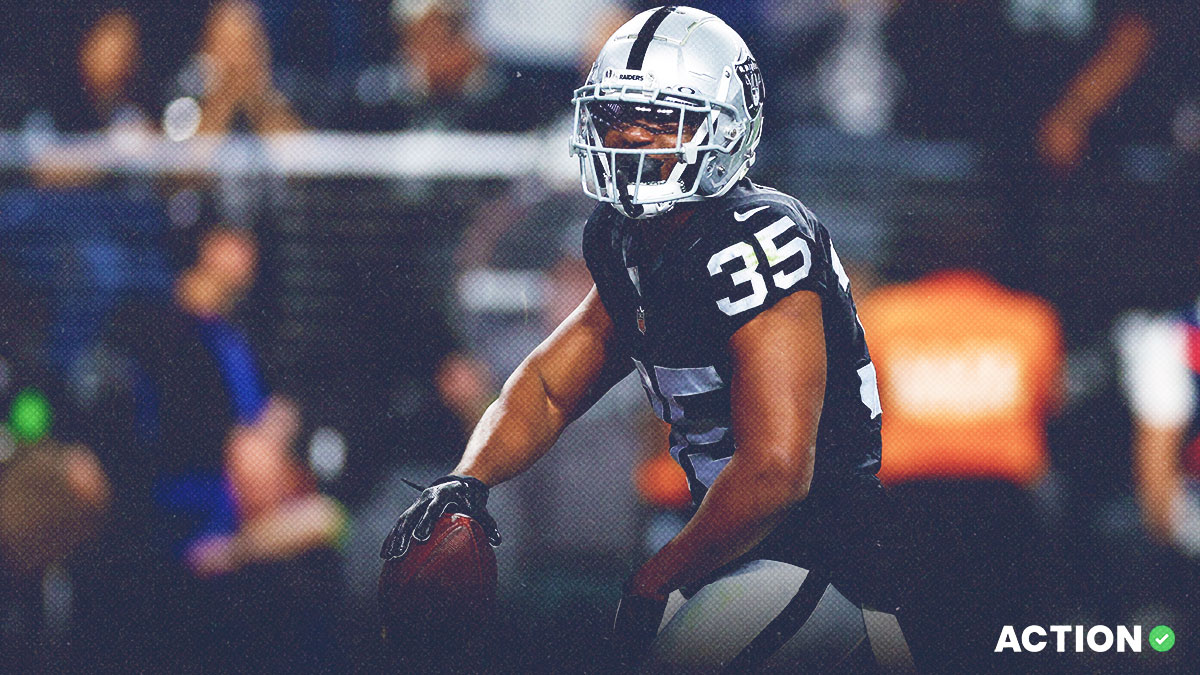- We are in the middle of fantasy football draft season ahead of the 2022-23 season.
- One of our experts has laid out his draft strategy for every position.
- Check out Chris Raybon's
The perfect fantasy football strategy is all about maximizing your upside while minimizing the risk of your team as a whole. Part of that is simply picking the right players – and for that you can check out my projections and rankings – but the other part is knowing how to optimally construct a team. That’s what this article is about.
(Note: This applies to traditional redraft formats that start one QB, are 10 or 12 teams, and use half or full PPR scoring.)
Aim for…
At least 3 RB, 4 WR through the first 9 rounds in 12-team leagues
At least 4 RB, 4 WRs through the first 10 rounds in 10-team leagues
There are roughly 40 RBs and 40 WRs which you can reasonably expect to provide a startable Week 1 floor. In order to optimize my starting lineup and usable early-season depth, I want to make sure I draft as many of these players as possible before they’re gone – which will happen by the end of Round 9 in 12-team leagues and Round 10 in 10-team leagues – while also leaving room for a starting-caliber QB1 and TE1.
Regarding the split of RBs to WRs, I find that drafting less than three RBs in 12-team leagues or less than four in 10-team leagues will leave me with too little depth relative to my league mates.
RB depth is crucial because RBs miss more games than other positions. For instance, last season the median games missed was one for a starting WR but three for a starting RB.
If I end up waiting on QB, then I’ll take an extra RB or WR based on the best available player on my board. The same is true if I miss out on the top-10 TEs or so (although that is far less ideal than waiting on a QB, which I’ll discuss in a bit).
Target a Stud TE
I go into every draft hoping to get Travis Kelce or Mark Andrews. While they don’t max out at as many points as the top RBs or WRs, they’re the only players that have a realistic shot of posting fantasy point total on par with, say, a mid-range RB1 or WR1.
Look at it this way: Last season, Andrews and Kelce scored 244 and 219 half-PPR points respectively. Those totals were on par with RBs 5-8 and WRs 6-10. The TE3, Dalton Schultz, posted 168 points, which is akin to RB24 and WR27. Rob Gronkowski was the TE3 in per-game scoring but played only 12 games, but his 17-game pace would have still topped out with scores no better than RB15 and WR15 overall.
Winning your league means being the top team of 10 or 12, which means being in the top 8-10 percentile. To maximize your chances, you want the TEs capable of posting top-8-10 percentile scoring. You have multiple shots to find those players at RB and WR, while QB tends to have a greater supply of high-upside options available in the later rounds.
Whether I target Kelce or Andrews comes down to my draft slot. If I’m drafting in the back-end of the first round, I’m hoping to get Kelce plus a top-six RB1 (Jonathan Taylor, Christian McCaffrey, Derrick Henry, Austin Ekeler, Dalvin Cook, Najee Harris) or top-four WR1 (Cooper Kupp, Justin Jefferson, Ja’Marr Chase, Davante Adams). That usually means I’ll have to take Kelce in Round 2 rather than Round 1, but obviously he won’t always make it back. In that case, I have a choice to make about reaching on Andrews or playing the board and hoping I can get one of the Tier 2 TEs (usually Kyle Pitts based on draft position) below ADP.
While Pitts, George Kittle, and Darren Waller are in the next tier, it’s tough to see them with as high of a ceiling this year. Pitts has the most upside of the three and is being drafted accordingly, but it’s tough to see a Marcus Mariota- or Desmond Ridder-led team passing for enough yards and TDs to allow for an outlier season for Pitts.
While Kittle and Waller have shown Kelce/Andrews-esque upside in the past, their teams no longer need them to be target hogs thanks to their respective WR talent.
If I do miss out on Kelce early in Round 2, I would feel better reaching on Andrews if I was able to start with one of the top WRs than with one of the RBs. Running backs carry more injury risk, and I’d be compounding that risk by passing up on a mid-range WR1 and paying a premium for a player with a lower relative ceiling.
The ideal draft slot is at the front-end of Round 1. That way, I can end up with a high-end RB1, grab Andrews on the way back in Round 2, and still sneak in a low-end WR1 (Keenan Allen, Mike Evans, A.J. Brown) early in Round 3.
I don’t feel as good about the low-end RB1/high-end-RB2 tier that is available near the 2-3 turn, but if I can start with, say, Cooper Kupp and Andrews, having to pick from the RBs available early in Round 3 is a worthy sacrifice. The RB2/3 tier is a lot deeper this year, so there’s even the option of going Zero RB and throwing darts at 3-4 middle-round RBs (this strategy is better suited to best ball).
My contingency plan if I miss out on Andrews – which can happen if I draft in a slot too far in the middle or simply get sniped – is to hopefully snag George Kittle or Darren Waller in Round 5. At this point, though, I’m just playing the board, not forcing the issue.
If I miss out on the top 10 TEs it’s not ideal, but it’s not the end of the world. That means I’ll get an extra RB or WR, and I’ll take a shot on a high-upside guy like Albert Okwuegbunam or Pat Freiermuth, or wait even longer and take a deep sleeper like Gerald Everett or Tyler Higbee.
Ideal Start With Early/Mid-Round 1 Pick: RB-Mark Andrews-WR
I never come into the draft with a rigid early-round positional strategy such as RB-RB-RB or WR-WR-WR, etc. Since I’m in line with first-round ADP and six of the top eight first round picks are RB, though, I know there’s a good chance I’m going to end up with a RB in Round 1 if my pick is in the top eight. And since I’m high on the stud TEs and Mark Andrews’ ADP is in the 20-25 range, I’m usually in position to take him in Round 2 and still get a low-end WR1 such as Keenan Allen, Mike Evans, Tee Higgins, or A.J. Brown in Round 3.
I’m not going to go against my board if Cooper Kupp or Justin Jefferson is the top player when I’m up in Round 1, but the reason I view RB-Andrews as the ideal start over WR-Andrews is because the latter forces me to draft a less balanced team, with a top-heavy WR1 and a RB1 from the RB2 tier.
Ideal Start With Late First-Round Pick Revolves Around Kelce
If you want a top-two TE, drafting late in the first round effectively locks you in to targeting Kelce, as Andrews would be a reach early in Round 2.
Even if you’re able to get Kelce, drafting with a later pick in Round 1 is still tougher than drafting in the early or middle because it’s difficult to land both an RB1 and a WR1 if you also want Kelce since all of the RB1s and WR1s are typically gone by the time you’re up to pick late in Round 3.
Target WRs Aggressively, Let RB Value Fall
Because WRs tend to play more games than RBs, it gives the position a greater collective ceiling/floor combo, which is better when spending premium picks. This is why I aim to take RBs below ADP, but am fine with taking WRs at or even slightly above ADP.
Because WRs are more reliable and RBs have lower floors due to increased injury risk, I strongly devalue the position once I’ve drafted my first RB. I still have my RB quota (at least three RBs by Round 9 in 12-team leagues and at least four by Round 10 in 10-teamers), but I’m fine with drafting them as late as possible within that framework. This allows me to minimize risk of missed games with earlier picks while also likely taking advantage of falling value at the position – a win-win.
The RB2/3 tier is deep this year. Last year, we had Myles Gaskin, Mike Davis, Trey Sermon, Raheem Mostert, Zach Moss, and Ronald Jones II all going as top-36 RBs. This year’s group is far more talented, its roles more solidified. But there are still question marks about role/usage for every RB from Cam Akers (RB18) on down – just not enough question marks to justify passing on WRs and TEs early to indiscriminately start RB-RB-RB.
Don't Target QB Before Jalen Hurts
Of the 40 top-five QBs since 2014, only 12 had an ADP in the top 60 overall picks. And of the 32 QBs drafted in the top 60 picks since 2014, only 12 (38%) finished QB5 or better. Another 31% of those passers finished QB6-11, while the final 31% finished 12th or worse.
The highest QB in ADP I want to take is Jalen Hurts. Given his rushing upside and the addition of A.J. Brown, Hurts has as high of a ceiling as any of the QBs going before him. I have Josh Allen projected for 2.0 more points per game than Hurts, but all the other QBs are separated by mere 10ths of a point in my model.
Given that Hurts goes 3-5 rounds later than Allen, it’s hard to justify passing up the chance to draft Allen over low-end RB1/WR1 or stud TE.
My contingency plan for Hurts is Trey Lance, who is essentially Discount Hurts with the same upside but less of a track record. I’d bet that Lance’s 2023 ADP will be where Hurts’ is this year.
If I miss out on Hurts or Lance, I’m not going to panic. My roster is sure to be stacked if I still haven’t taken a QB and Lance is gone, because that means I’ll get an extra RB or WR in the first 9-10 rounds.
My final contingency plan before I resort to streaming is Justin Fields. He’s probably at least a year away from having the upside to put up high-end QB1 numbers week-in and week-out, but he ran enough to finish to post one high-end QB1 finish and three low-end QB1 finish over his last four starts (excluding the Week 11 game which he was unable to finish due to injury).
Will there be exceptions? Sure, if one of the other QBs that goes after Hurts but before Lance (Tom Brady, Dak Prescott, Joe Burrow) suffers a precipitous fall into the 10th round or later, but that rarely happens. Besides, it’s extremely difficult to justify not taking a QB with rushing upside when Fields averaged a QB8 finish over his last four complete games.
Remember, this is the same Fields who finished with the worst QBR in football and had a supporting cast and coaching staff that might as well have been employed by the opposing team.
Prioritize High Ceilings in Late Rounds
Once the double-digit rounds hit and all of the RBs and WRs with startable floors are gone, you will still have 4-5 bench spots that you’re going to want to fill with RBs and WRs. This is when you want to target players based almost solely on ceiling.
At RB, that means I’m targeting players that could produce RB1 value if the starter went down, or RBs that could eventually earn the starting roles on their team. Players like Alexander Mattison, Brian Robinson Jr. and Isiah Pacheco come to mind.
At WR, I’m looking for players who can become a top-two target on their team not necessarily via injury, but through a mix of talent and opportunity. Players like Romeo Doubs and George Pickens are the ideal selections here.
Don't Draft Kicker or DST Until Late, Only Do So if Required
These positions are low on scoring and high on both unpredictability and supply. There’s absolutely no reason to take them until the last possible moment.
And even then, I would only recommend drafting them at all if your league requires you to do so. If not, I would use the extra spots on high-upside RBs instead, and just pick up the top available streamer at K and DST right before Week 1 rosters lock. Since most leagues draft a week or two before the season, those RBs could come into value via trades, injuries in practice, etc.
The only exception is if I have the opportunity to draft one of the top kickers or DSTs that I know I’d be starting every week, such as Justin Tucker.
Don’t Draft More Than 1 QB, TE, K or DST
Roster spots are valuable commodities. Whenever possible, they should be spent on positions that are high-scoring and in low supply, aka RB and WR.
Because there are 32 NFL teams but you only have to start one QB, TE, K and DST, your league will often have more than half of the league’s starters at those positions available on the waiver wire. At RB and WR, you’d be lucky to find a team’s RB2 or WR2 still on the wire because 60-70 are usually drafted.
I apply this philosophy even if I end up waiting too long at QB or TE and am weak at the position. If I’m already weak, using an extra draft pick at the expense of a RB or WR is just going to compound the problem, because now I’m carrying a player at QB/TE that I could just as easily find on the waiver wire while also giving myself one less chance to hit on a startable RB or WR – an asset which I could then flip later on for an upgrade at QB/TE.
I know there’s a school of thought that says you should take a backup QB precisely because many of your league mates will (I’ve seen data to suggest that the average fantasy team drafts 1.96 QBs), which thins out the waiver wire of potential streaming options. But if almost everyone drafts a second QB, I view it as ideal, because I’m getting an entire extra round’s worth of RBs and WRs to choose from.
And remember, rushing upside is the equalizer when it comes to QBs, and at least two QBs with rushing upside are almost guaranteed not to get drafted even if everyone in your league drafts a backup: Daniel Jones (ADP QB28) and Marcus Mariota (ADP QB31).


